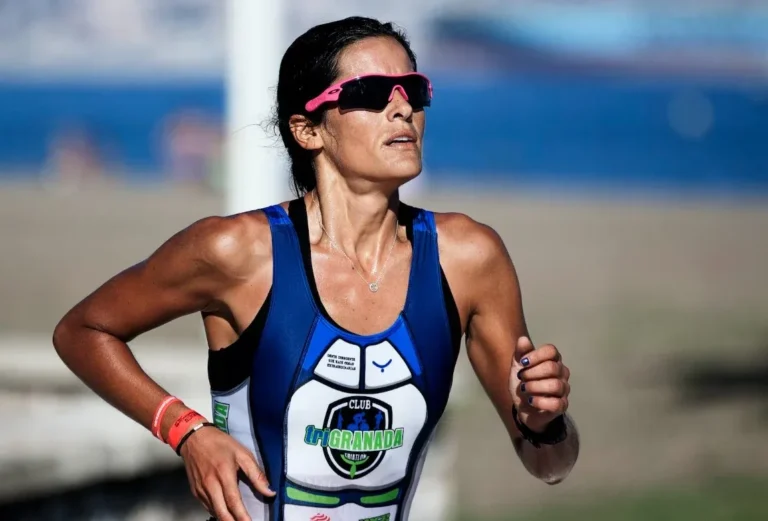Completing an Ironman is a daunting task that requires immense physical and mental strength. But what is the hardest part of an Ironman?
In this article, we will explore the different aspects of an Ironman and determine which one is considered the hardest. From the open water swimming, to the long-distance biking, and running, to the mental and emotional challenges, each aspect of an Ironman presents its own unique challenges.
We will also discuss the importance of proper training, technique, and preparation, as well as some tips and strategies for overcoming these challenges.
Whether you’re a seasoned Ironman veteran or a first-time competitor, this article will provide you with valuable insights and information to help you prepare for and conquer the hardest part of an Ironman.
The swim
The swimming segment of an Ironman is the first stage of the race, where participants must complete a 2.4-mile swim in open water. This can be one of the most challenging aspects of an Ironman as open water swimming presents a different set of obstacles than swimming in a pool.
Open water swimming
Some of the challenges of open water swimming include choppy water, currents, waves, and the possibility of encountering marine life. Additionally, open water swimming can be disorienting, and it can be difficult to maintain proper technique and pace.
Importance of proper technique and training
Proper technique and training are crucial for the swimming segment of an Ironman. Swimmers need to work on their stamina, breathing and stroke technique to be able to handle the distance and the conditions of the open water. It is also important to get familiar with open water swimming, by participating in open water training and races before the Ironman.
Comparison to other Ironman events
The swimming portion of an Ironman can vary depending on the location of the race. Some events may have calm waters, while others may have choppy waters and strong currents. This is why it is important to research the location of the Ironman and prepare accordingly.
The bike
The biking segment of an Ironman is the second stage of the race, where participants must complete a 112-mile bike ride. This can be one of the most physically demanding aspects of an Ironman as it requires a high level of endurance, strength and focus.
Challenges of long-distance biking
Long-distance biking can be challenging due to the physical demands of the distance, the variable terrain, and the weather conditions.
The bike course can have hills, headwinds, and even extreme temperatures that can make it hard to maintain a steady pace and conserve energy.
Importance of proper bike fit and maintenance
Proper bike fit and maintenance are essential to have a successful biking segment of an Ironman.
A proper bike fit will help to reduce fatigue and injury, and regular maintenance will ensure that the bike is running smoothly and efficiently.
Comparison to other Ironman events
The biking portion of an Ironman can vary depending on the location of the race. Some events may have flatter terrain, while others may have more hills, and technical sections. It is important to research the location of the Ironman and prepare accordingly.
The run
The running segment of an Ironman is the final stage of the race, where participants must complete a marathon distance run of 26.2 miles. This can be the most mentally challenging aspect of an Ironman as it comes after swimming and biking, and the fatigue and muscle soreness can be overwhelming.
Challenges of long-distance running
Long-distance running can be challenging due to the physical demands of the distance, the variable terrain and weather conditions, and the mental and emotional challenges of maintaining focus and motivation for an extended period of time.
Importance of proper training and nutrition
Proper training and nutrition are essential to have a successful running segment of an Ironman. A well-structured training plan that includes a variety of runs, such as long runs, tempo runs, and intervals will help to build the endurance and strength needed for the marathon distance.
Adequate nutrition, hydration and rest are also important to be able to perform at your best.
Comparison to other Ironman events
The running portion of an Ironman can vary depending on the location of the race. Some events may have flatter terrain, while others may have more hills, and technical sections.
It is important to research the location of the Ironman and prepare accordingly.
Mental and emotional challenges
The mental and emotional challenges of an Ironman can be just as demanding as the physical challenges. The endurance required, the pressure to perform and the uncertainty of the race can take a toll on the mind and the emotions.
Importance of proper mental preparation and training
Proper mental preparation and training are essential to overcome the mental and emotional challenges of an Ironman. This includes setting realistic goals, visualizing and rehearsing the race, and developing mental strategies to cope with difficult situations.
Coping with physical and mental fatigue is a crucial aspect of an Ironman. This can include developing a positive attitude, focusing on the present moment, and using mental cues to push through difficult times.
Conclusion
This article has discussed the different aspects of an Ironman and the unique challenges that each presents. From the open water swimming, to the long-distance biking, running, and mental and emotional challenges, each aspect of an Ironman requires proper training, technique, and preparation.
The hardest part of an Ironman is subjective and can vary depending on the individual, but the article has highlighted the key aspects of the race and the importance of proper preparation to overcome the challenges
Final thoughts and recommendations
Whether you’re a seasoned Ironman veteran or a first-time competitor, this article has provided valuable insights and information to help you prepare for and conquer the hardest part of an Ironman. It’s important to remember that proper training, proper preparation, and a positive attitude will go a long way in achieving your goals in an Ironman.
